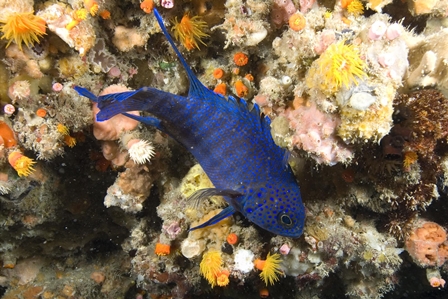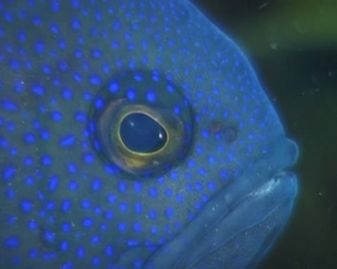General Description
Body moderately long, compressed, head bluntly rounded, dorsal and anal fins greatly elongated posteriorly, almost reaching to the end of the large rounded tail; pelvic fins large; lateral line in two parts. Body bark blue to bluish grey with a dense covering of bright blue spots. To 33 cm.
Biology
These spectacular fishes often seem unafraid of divers and are very popular with underwater photographers.
Habitat
Coastal and offshore reefs and drop-offs, usually in caves, crevices or under ledges during the day, in depths of 3-45 m.
Reefs
Distribution guide
Southern Australia, including western and central Victoria.
Species Group
Fishes › Blue devils and hulafishes
Depth
Shallow (1-30 m)
Deep ( > 30 m)
Water Column
Max Size
33 cm
Diet
Carnivore
Commercial Species
No
Global Dispersal
Native to Australia
Conservation Status
- DSE Advisory List : Not listed
- EPBC Act 1999 : Not listed
- IUCN Red List : Not listed









